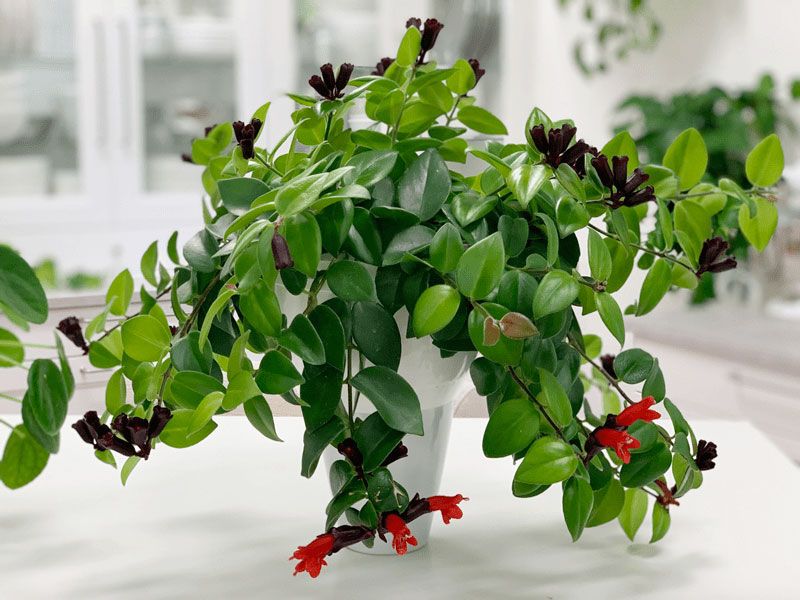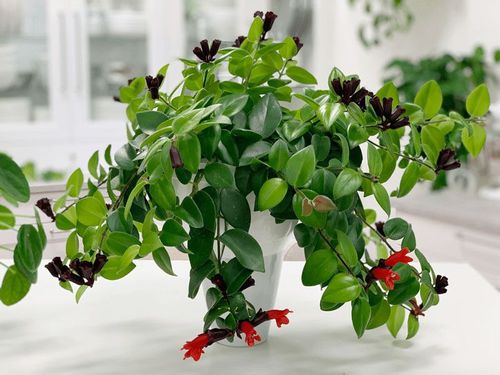Lipstick plant
| Botanical Name: | Aeschynanthus radicans |
| Common Name: | Lipstick plant, lipstick vine, basket vine |
| Botanical Name | Aeschynanthus radicans |
| Common Names | Lipstick plant, lipstick vine, basket vine |
| Care | Easy |
| Humidity | Medium |
| Sun Exposure | Partial Sun |
| Height | 3 ft. |
| Soil | Very well-drained |
| Life Cycle | Perennial |
| Synonyms | Aeschynanthus javanicus, Aeschynanthus radicans var. lanuginosus, Aeschynanthus radicans var. robustior, Aeschynanthus teysmannianus, Trichosporum javanicum, Trichosporum ovatum, Trichosporum radicans, Trichosporum teysmannianum |
From same family
ExploreFrequently asked questions
- Is it possible to relocate plants outside during the summer?
Indeed, potted lipstick plants have the potential to be transferred to an outdoor setting like a patio or deck during the summer season. Nevertheless, it's important to note that they don't fare well in temperatures lower than 60 degrees Fahrenheit. Additionally, these plants thrive in humid environments, which means they might not appreciate being placed outdoors in dry regions, such as the Southwest.
- Are there alternative species within the Aeschynanthus genus worth considering?
The Aeschynanthus genus boasts over 150 species, and beyond A. radicans, numerous others are nurtured as indoor plants. Notably, A. humilis and A. pulcher are occasionally available as houseplants, commonly referred to as lipstick plants or lipstick vines. These species share resemblances with A. radicans concerning their traits and care prerequisites.
- Is it feasible to cultivate the lipstick plant as part of a landscape?
Cultivating this plant directly in garden soil can be challenging, given its epiphytic nature, typically thriving in the crevices of tree bark. Opting to grow them on patios using hanging baskets that can be transferred indoors during temperature drops presents a viable approach. Moreover, these baskets might even draw in pollinators such as hummingbirds due to their alluring nectar-rich tubular flowers, if you're fortunate.






